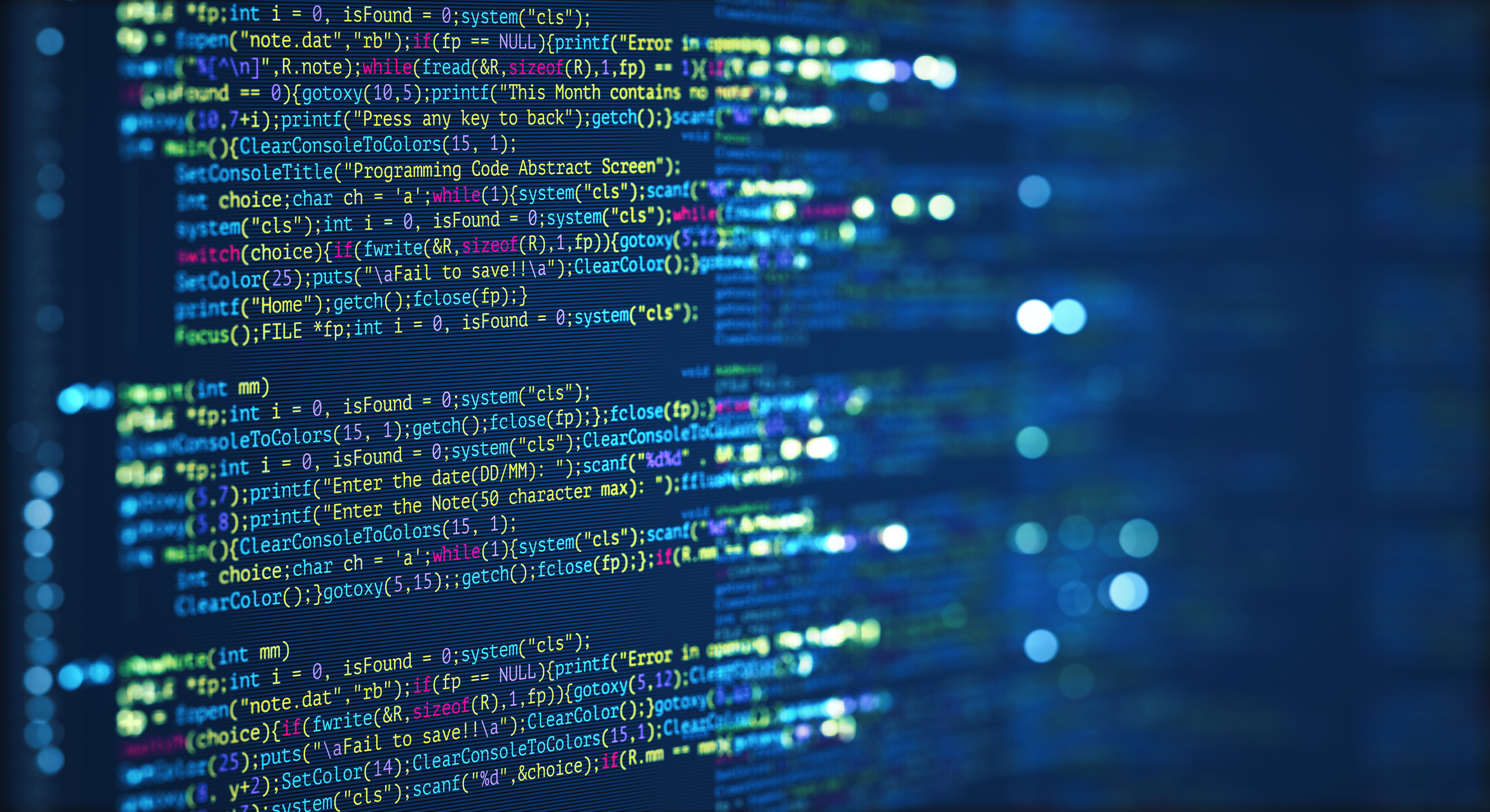Is it Time for a Code Scan?
A code scan, often called a software code review, is a systematic examination of a software codebase. The primary objectives of code scans are identifying vulnerabilities, ensuring optimized performance, and checking adherence to coding standards.
The Importance of Software Code Scans
Software code scans are a technical necessity and strategic imperative in today’s digital world.
They fortify software against evolving threats, optimize performance, and assure adherence to the highest quality standards.
For businesses, they protect against financial and reputational risks. For end-users, they provide a safe, efficient, and reliable digital experience. And for investors, they provide visibility into the state of a potential software company acquisition.
In an age where software drives everything, ensuring its integrity is paramount.
Identifying The Right Time for a Code Scan

While regularly scheduled scans are fundamental, some strategic junctures in the business and development lifecycle amplify the importance of this critical examination.
M&A and Private Equity Scenarios
The corporate terrains of M&As and PE investments are where the pre-emptive power of code scans truly shines. For software companies poised at the brink of these significant transitions, initiating a code scan can indeed be the catalyst for showcasing their software’s robustness and reliability.
Initiating a code scan before entering investment dialogues or M&A discussions isn’t just about technical diligence—it’s a strategic maneuver. Companies can control the narrative by presenting a comprehensive review of the software’s health and integrity, showcasing strengths, and proactively addressing vulnerabilities.
Likewise, for private equity and venture capital firms (or other acquiring org), code scans provide insight into the state of a software product that could be added to a portfolio. Knowing the risks and limitations of the codebase can improve the firm’s negotiation position and ensure investments are sound.
New Leadership Onboarding
Introducing new technology leadership, particularly at the CTO level, is another opportune moment. A code scan offers a detailed insight into the software’s current state, laying the groundwork for informed strategy and innovation roadmapping.
For the new leadership, a comprehensive scan offers a deep dive into the software’s health, performance, and potential areas of improvement. It’s an evaluation and a foundational step for planning, strategy formulation, and future innovations.
Integrating Code Scans within the SDLC
- Initial Development Phase: Before integrating newly developed modules into the main codebase, it’s necessary to run preliminary static analyses. This early-stage scanning helps catch vulnerabilities before they become deeply ingrained, reducing remediation efforts and costs.
- Integration Phases: As new components or modules get added, ensuring they securely mesh with existing code is vital. Scans during this phase can catch integration vulnerabilities and inconsistencies.
- Post-Testing Phase: After the software has undergone its standard testing protocols, initiating a dynamic analysis can provide insights into runtime vulnerabilities and other real-world potential threats.
- Pre-Deployment: Before pushing the software into a production environment, a comprehensive scan ensures the code is free from last-minute vulnerabilities, especially in configurations or environment-specific aspects.
- Regular Intervals in Production: Even post-deployment, periodic scans are crucial to catch any new vulnerabilities that may arise due to changes in the digital landscape, dependencies, or runtime environments.
Contextual Triggers for Code Scans
- After Major Code Changes: Significant code refactoring, addition of new features, or integration of third-party libraries should be met with thorough scanning.
- Following a Security Incident: If your software, or similar software in the domain, has suffered a security breach, it’s a clear signal to recheck your codebase for vulnerabilities.
- Dependency Updates: If your software relies on third-party libraries or frameworks, you should conduct a scan every time these dependencies are updated. Updated components might introduce new vulnerabilities or interactions.
- Regulatory Changes: If you’re in a sector that faces regulatory oversight (like finance or healthcare), any change in compliance requirements should trigger a review and scan to ensure adherence.
Recognizing Indirect Indicators
- Performance Metrics: An unexpected dip in performance can sometimes indicate underlying code issues or vulnerabilities. In such cases, a code scan can be illuminating.
- User Feedback: If users report unexpected software behaviors, especially those hinting at possible security concerns, it’s wise to conduct a scan.
- Changes in the Threat Landscape: Stay informed about the broader digital security ecosystem. If a new class of vulnerabilities is identified in the software world, ensure your code isn’t susceptible.
Common Challenges to Reviewing Software Code

The importance of software code scans in modern development practices cannot be stressed enough. However, like any intricate process, it comes with its set of complexities.
A deep dive into these challenges not only aids in addressing them efficiently but also refines the overall scanning process.
False Positives
False positives are situations where the scanning process incorrectly flags a code segment as vulnerable or problematic when it’s harmless. The implications of such errors are manifold.
For one, they can lead to considerable developer time wastage, as each flagged issue requires manual review. This can also muddy real threats, pushing them into the background.
Often, the root causes for such false positives can be traced back to generic rule sets, overly aggressive scanning configurations, or not tailoring the scanning criteria to the specific software architecture.
Scalability & Performance Concerns
As software projects expand, the sheer volume of code to scan can be daunting, leading to extended durations for scanning.
There’s also the matter of performance. Intensive scans, while thorough, might slow down the development and testing environments, potentially impacting productivity.
Another concern is that of incremental scanning. By focusing only on changed code segments without considering the broader application context, such scans can sometimes miss vulnerabilities introduced by these new segments.
Complex & Evolving Code Bases
Modern applications often involve a blend of programming languages and frameworks. Ensuring a comprehensive scan across such varied components can be a challenge.
Then there’s the matter of legacy code. This older code, perhaps written using outdated practices or not documented comprehensively, can pose difficulties during scans.
Another challenge is the ever-evolving nature of digital threats. Scanning tools need to be perpetually updated as new vulnerabilities emerge to recognize and address these novel threats.
Resource & Skill Constraints
Conducting effective code scans isn’t just about deploying a tool—it demands expertise. This expertise isn’t just in the operation of the scanning tool, but also in interpreting its results.
This often means that organizations face challenges training their teams to mesh scanning seamlessly into their workflows.
And then there’s the financial aspect. Premium scanning tools can come with a hefty price tag, which might strain the resources of smaller entities or startups.
Integration & Automation Difficulties
Integrating code scans into the Software Development Life Cycle (SDLC) without causing disruption is challenging. While automation promises to streamline this process, setting it up can be complicated.
Especially in intricate Continuous Integration/Continuous Deployment (CI/CD) pipelines, integrating automated scanning requires meticulous planning and execution.
Organizational Resistance
Organizational culture plays a role in adopting any new process, and code scanning is no exception.
Developers might view it skeptically in environments where scanning hasn’t been the norm. They might perceive scans as an added workload or even as a critique of their coding skills.
Misconceptions can be barriers, too.
Some teams might feel their code is secure because they’ve never encountered a breach or believe their external defenses are robust enough. Thus, many organizations partner with third parties to perform code scans without internal bias.
Keeping Up With Software Tool Evolution
The digital domain is dynamic, and tools used for code scanning are in perpetual evolution.
Development teams must stay up-to-date on the latest features, capabilities, and best practices associated with their scanning tools.
Another often overlooked challenge is tool compatibility.
As frameworks or development environments receive updates or undergo changes, ensuring the scanning tools remain compatible becomes pivotal.
What Happens Next? How to Prioritize Code Scan Findings

The code scan journey doesn’t end with identifying vulnerabilities and strengths.
Navigating the post-scan landscape involves a systematic approach to prioritizing findings, strategizing enhancements, and maintaining transparent communication with stakeholders.
Prioritize Findings
- Sorting Insights: Findings from a code scan are categorized based on their impact and urgency. Immediate attention is given to critical issues, especially those related to security and functional integrity.
- Risk Assessment: Each issue is assessed for its potential risk to enable prioritized actions, ensuring that critical vulnerabilities are swiftly addressed.
Road Mapping Improvements
- Action Plans: Insights from the scan are integrated into a strategic action plan, aligning remediation and enhancement steps with organizational goals and resources.
- Dynamic Adjustments: The improvement plan is adaptable, evolving to accommodate new insights and business objectives, ensuring ongoing code quality enhancement.
Investor Communication
- Open Conversations: Keeping investors informed about the scan findings and remediation plans underscores a commitment to transparency and continuous improvement.
- Addressing Technical Debt: While often inevitable, technical debt needs to be communicated to investors in a manner that highlights the organization’s proactive approach to management and resolution.
Software Code Scan Services & Consultants
From in-depth technical code scans to high-level consultancy on refining your review process, KMS Technology is your comprehensive solution.
KMS goes beyond just identifying vulnerabilities.
Our seasoned experts dive deep into the mechanics of your software, offering both technical oversight and consultative guidance. We get into the weeds with line-by-line code scans and help you leverage the results to improve your software product and generate the most value.
Contact our experts today for a free project evaluation.







